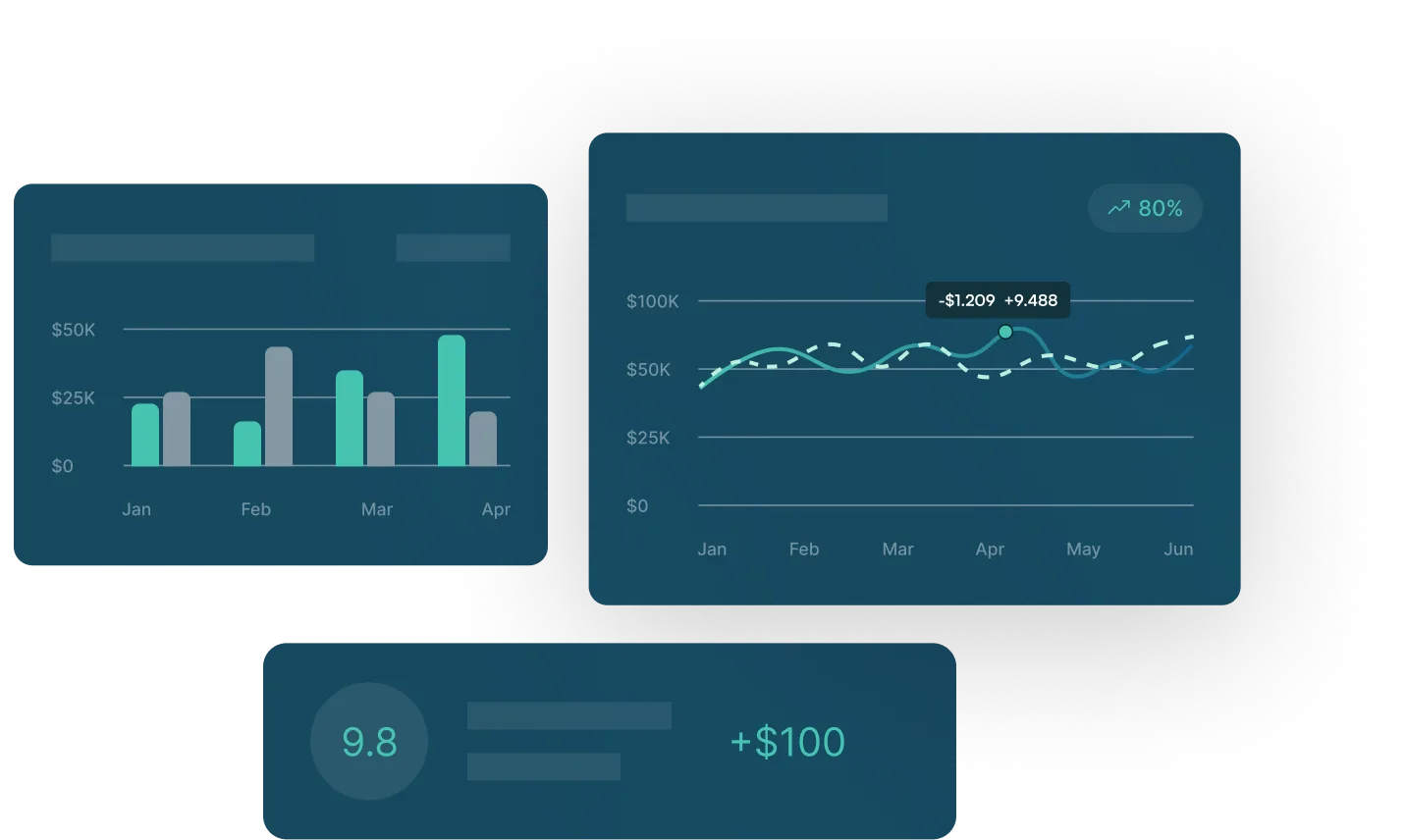Top 2 Challenges of Hedging Net Income with Proxy Hedges


Many companies want to hedge their economic exposure to foreign currency, but, with foreign functional subsidiaries, hedging net income is difficult to do. In this blog, we discuss an indirect hedge strategy called a proxy hedge: hedging one thing to protect another.
Companies want to hedge economic exposure to foreign currency fluctuations, whether it’s hedging revenues and expenses or hedging net income consolidated into earnings per share. They also want the accounting for those hedges to reflect hedge effectiveness.
However, when companies have local currency functional subsidiaries, certain transactions rarely qualify for special hedge accounting treatment, including:
- Third party local currency sales
- Inventory purchases
- Operating expenses
The only “hedge-able” item available for special hedge accounting is a non-functional currency transaction. A euro denominated sale in a euro functional entity doesn’t qualify. What frequently does qualify is an intercompany sale or payment between the parent and subsidiary (or between sister companies) that is related to a third-party transaction. This may be the only qualifying currency risk either entity is exposed to.
Fortunately, the intercompany sale/purchase frequently represents a value close to net income in the currency.
For example:
- A cost-plus entity is invoiced for a small amount greater than the company’s economic exposure to that currency.
- A manufacturer may charge a transfer price that leaves an amount close to the operating costs of the buying entity.
We call “hedging the intercompany” a proxy hedge since hedge accounting isn’t directly available for the third party economic exposure the company battles. So, we hedge something with the same risk profile to generate similar results. In some cases, the proxy hedge works perfectly. But in many cases, it fails to produce the expected results. Here are the top 2 challenges with doing this.
Challenge #1: Timing
Let’s take a basic proxy of hedging net income as an example.
A company has identified the anticipated intercompany sale by the USD parent of 1,000 euros of goods in a quarter as a proxy available to hedge an anticipated 800 euros of net income for the quarter at a euro functional subsidiary. The euro subsidiary cannot hedge its euro revenue or expenses directly under ASC 815. However, the parent can hedge 100 percent of highly probable euro denominated anticipated intercompany sales as a proxy.
If the company hedges 800 euros and net income comes in at 800 euros, the program will be a success. But forecasting expenses into the future is difficult, forecasting revenues are much worse, and forecasting the net of the two is extremely difficult.
Proxy hedgers need to keep a close eye on both the accounting and the economics of their hedge program. A proxy hedge program runs the risk of turning uneconomic in a way that can be “hidden” not only from auditors and management but also from the hedging team.
In our proxy hedge example, let’s assume the company hedged 80 percent of its third quarter net income (640 of 800 euros). The quarter’s third-party euro forecasts for revenue and expenses are 1,200 and 400, respectively. This makes for an anticipated net income forecast of 800 euros for the period. There is 1,000 euros of intercompany revenue to absorb the first 640 euro of intercompany revenue defined as the hedged exposure (we are only hedging 640 of the 800 to be conservative). The risk of over-hedging from an accounting perspective is low and the hedge is conservative in that respect.
Assume the third-party revenues and expenses come in evenly over the quarter and by month they were: 266, 266, and 267. Intercompany revenue would follow in kind at: 333, 333, 334. The hedges will be applied to the intercompany revenue in month one and in month two (for amounts larger than the expected margin in both months). Thus, the company’s net income is over-hedged economically in months one and two, leaving net income in month three totally exposed. If the objective was a hedge of net income, this program would have met accounting “effectiveness” rules but would not have protected net income of the quarter.
Challenge #2: Going Uneconomic
Another risk is that third-party revenue might come in lower or expenses higher—or both, distorting net income.
What if third party revenue comes in lower at 1,000 and expenses come in higher at 500? The net economic risk turned out to be only 500 euros in this case, but the company hedged 640! Once again, the hedge accounting would be okay as the proxy amount (640) is lower than foreign intercompany revenue, which may also be reduced, but still remains higher than the hedged amount. So in this example, net income was over-hedged in periods 1 and 2, and this time also in period 3.
The hedge program is a failure as it has increased rather than decreased the currency risk by over-hedging the company’s economic position.
In these examples, we assumed that the net income exposure was spread evenly across a quarter. In many situations, months 1 and 2 when the hedge is applied have the lowest margin and month 3, which frequently goes unhedged, has the most margin.
The accounting “effectiveness” concept often shelters these cases of economic ineffectiveness when treasury and accounting don’t recognize the disconnect.
How to Overcome Proxy Hedge Challenges
To prevent this scenario from occurring (or to catch it early), we recommend a robust performance reporting process that includes both an evaluation of the accounting and the economics of the hedge program. Below is just a sample of some of the reports that could be incorporated into the hedge program performance reporting process.
Top 2 Challenges of Hedging Net Income with Proxy Hedges
Many companies want to hedge their economic exposure to foreign currency, but, with foreign functional subsidiaries, hedging net income is difficult to do. In this blog, we discuss an indirect hedge strategy called a proxy hedge: hedging one thing to protect another.
Companies want to hedge economic exposure to foreign currency fluctuations, whether it’s hedging revenues and expenses or hedging net income consolidated into earnings per share. They also want the accounting for those hedges to reflect hedge effectiveness.
However, when companies have local currency functional subsidiaries, certain transactions rarely qualify for special hedge accounting treatment, including:
- Third party local currency sales
- Inventory purchases
- Operating expenses
The only “hedge-able” item available for special hedge accounting is a non-functional currency transaction. A euro denominated sale in a euro functional entity doesn’t qualify. What frequently does qualify is an intercompany sale or payment between the parent and subsidiary (or between sister companies) that is related to a third-party transaction. This may be the only qualifying currency risk either entity is exposed to.
Fortunately, the intercompany sale/purchase frequently represents a value close to net income in the currency.
For example:
- A cost-plus entity is invoiced for a small amount greater than the company’s economic exposure to that currency.
- A manufacturer may charge a transfer price that leaves an amount close to the operating costs of the buying entity.
We call “hedging the intercompany” a proxy hedge since hedge accounting isn’t directly available for the third party economic exposure the company battles. So, we hedge something with the same risk profile to generate similar results. In some cases, the proxy hedge works perfectly. But in many cases, it fails to produce the expected results. Here are the top 2 challenges with doing this.
Challenge #1: Timing
Let’s take a basic proxy of hedging net income as an example.
A company has identified the anticipated intercompany sale by the USD parent of 1,000 euros of goods in a quarter as a proxy available to hedge an anticipated 800 euros of net income for the quarter at a euro functional subsidiary. The euro subsidiary cannot hedge its euro revenue or expenses directly under ASC 815. However, the parent can hedge 100 percent of highly probable euro denominated anticipated intercompany sales as a proxy.
If the company hedges 800 euros and net income comes in at 800 euros, the program will be a success. But forecasting expenses into the future is difficult, forecasting revenues are much worse, and forecasting the net of the two is extremely difficult.
Proxy hedgers need to keep a close eye on both the accounting and the economics of their hedge program. A proxy hedge program runs the risk of turning uneconomic in a way that can be “hidden” not only from auditors and management but also from the hedging team.
In our proxy hedge example, let’s assume the company hedged 80 percent of its third quarter net income (640 of 800 euros). The quarter’s third-party euro forecasts for revenue and expenses are 1,200 and 400, respectively. This makes for an anticipated net income forecast of 800 euros for the period. There is 1,000 euros of intercompany revenue to absorb the first 640 euro of intercompany revenue defined as the hedged exposure (we are only hedging 640 of the 800 to be conservative). The risk of over-hedging from an accounting perspective is low and the hedge is conservative in that respect.
Assume the third-party revenues and expenses come in evenly over the quarter and by month they were: 266, 266, and 267. Intercompany revenue would follow in kind at: 333, 333, 334. The hedges will be applied to the intercompany revenue in month one and in month two (for amounts larger than the expected margin in both months). Thus, the company’s net income is over-hedged economically in months one and two, leaving net income in month three totally exposed. If the objective was a hedge of net income, this program would have met accounting “effectiveness” rules but would not have protected net income of the quarter.
Challenge #2: Going Uneconomic
Another risk is that third-party revenue might come in lower or expenses higher—or both, distorting net income.
What if third party revenue comes in lower at 1,000 and expenses come in higher at 500? The net economic risk turned out to be only 500 euros in this case, but the company hedged 640! Once again, the hedge accounting would be okay as the proxy amount (640) is lower than foreign intercompany revenue, which may also be reduced, but still remains higher than the hedged amount. So in this example, net income was over-hedged in periods 1 and 2, and this time also in period 3.
The hedge program is a failure as it has increased rather than decreased the currency risk by over-hedging the company’s economic position.
In these examples, we assumed that the net income exposure was spread evenly across a quarter. In many situations, months 1 and 2 when the hedge is applied have the lowest margin and month 3, which frequently goes unhedged, has the most margin.
The accounting “effectiveness” concept often shelters these cases of economic ineffectiveness when treasury and accounting don’t recognize the disconnect.
How to Overcome Proxy Hedge Challenges
To prevent this scenario from occurring (or to catch it early), we recommend a robust performance reporting process that includes both an evaluation of the accounting and the economics of the hedge program. Below is just a sample of some of the reports that could be incorporated into the hedge program performance reporting process.

See GTreasury in Action
Get connected with supportive experts, comprehensive solutions, and untapped possibility today.






























.png)





.png)
.png)







.png)











.jpeg)

.jpeg)


.jpeg)







.jpeg)

.jpeg)





.jpeg)


.jpeg)

.jpeg)








.jpeg)


.jpg)





.jpg)

.jpg)





